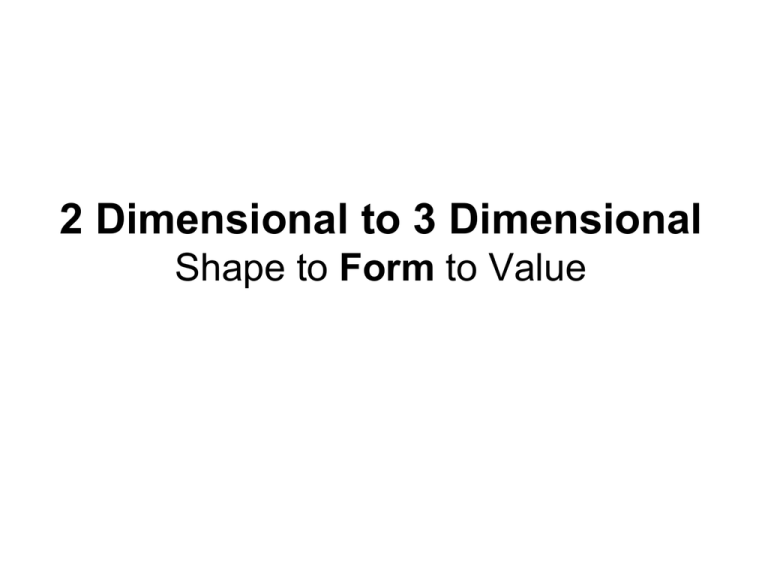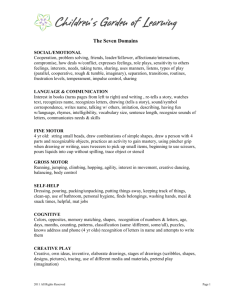Shapes and Form
advertisement

2 Dimensional to 3 Dimensional Shape to Form to Value Shapes All objects are either shapes or forms, whether they are rocks, puddles, flowers, shirts, houses, whatever. The words shapes and forms are used interchangeably in everyday language, but in art, they mean very different things. A shape is a two dimensional area that is defined in some way. In other words, it may have an outline or a boundary around it. If you draw the outline of a square on a sheet of paper, you have created a shape. All shapes can be classified as geometric or free form shapes. There are three basic geometric shapes that can be defined with precise mathematical formulas. square circle triangle Shapes and Form There are 2 types of shapes: 1.) Geometric All other geometric shapes are variations or combinations of these basic shapes oval rectangle octagon parallelogram hexagon trapezoid pentagon 2.) Organic - shapes are irregular and uneven shapes. Their outlines may be curved, angular, or a combination of both. There are 2 types of organic shapes: a.) Amorphic – free form and are nameless b.) Biomorphic – represent a recognizable object and can be named. They are often represented in silhouettes; (heart, house, bird etc) • Geometric shape to 3 dimensional forms David Smith, “Cubi” • Architects frequently use geometric forms in their building designs. The cylindrical towers of glass and stell lend an air of elegance to the design of this hotel From curved shape to curved form. • This sculpture is made with a forged rod of stainless steel. Jose’ de Rivera (b. 1904) Construction 8, 1954 Static Forms Dynamic Forms Forms are objects having three dimensions. Like shapes, they both have length and width, but forms also have depth. YOU are a three dimensional form, so is a tree or a table. Shading the basic forms : Rounded Forms Requires Gradation Sphere Cylinder Cone Flat Forms: Flat Shading Cube Pyramid Value Bar. Various shades from white to black Gradation VALUE Gradation: Is the artists rendering of values using a gradual/transitional change of a dark value to a lighter value. Darker value recedes, lighter values advances (come forwards). Drawing by John Biggers John Biggers John Biggers Value Value is the element of art that describes the darkness or lightness of an object. Value depends on how much light a surface reflects. A surface has a dark value if it reflects little light. It has a light value if it reflects a lot of light. Every time you make a mark with a pencil, you are creating a line with a certain value. The harder you press, the darker the value. A series of closely placed lines can create areas of dark value. (Also known as crosshatching) Albrecht Durer. An Original Ruler Seated On a Throne. 1445. Pen and Ink Printmakers relied on making repetitive marks to create different values by scratching or carving into plates of metal or wood. The closers the marks are the darker the value becomes. The farther the marks are from one another the lighter the value appears. Gradation Color Gradation: Is the artists rendering of values to represent light going from a gradual/transitional changes; dark value to a lighter value. • Articulation








